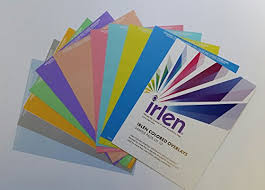Originally published on Harkla
An Overview of Lighting
The way a person views the world is colored by the effects of the light sources in the room. Natural lighting, fluorescent lighting, lamp/desk lighting, and secondary glare offer different levels of visual stimulation and for some people this can make a huge difference in their perceptions and mood.
There is a shopping mall that I avoid at all costs because it was designed with flashing neon store signs, endless overhead fluorescent lighting, and a loud echoing atrium with skylights that adds so much stimulation that I always end up a cranky shopper. I’m certainly not the only consumer having this aversive reaction to the mall environment, and yet most people are unaware that the design of these living, working, and community spaces impacts how we function (or not), feel, and interact.
Studies have shown that natural lighting has a positive impact on one’s mood, perceptions, health, and attitude. Research has also supported that dynamic lighting design (lighting that changes with the students and tasks) supports learning! Now consider your workplace or your child’s school classroom. How is their lighting designed? How is the classroom configured in relation to those light sources? Is the room you’re working or learning in designed to promote your availability for learning?
When we look at learning or working environments, there are many aspects of lighting design to consider:
The type of the light bulb (fluorescent or LED? full spectrum bulbs?)
The placement of the light (overhead or on a desk/table/floor?)
The type of flooring that may act as a reflecting surface (tile or carpet?)
The location of natural light sources in relation to you (windows, glass doors?)
The task at hand (computer screen work or reading a book?)
Potential sources of glare (whiteboard, computers, reflective surfaces?)
As an assistive technology specialist, I often look to making simple environmental changes that may be the key to helping a person function better. As an occupational therapist, my perspective on lighting comes from more of a sensory background. Both inform my views on environmental lighting and how to best promote participation, interaction, and success!
Light Sensitivity
Chances are that when you went shopping for your living room lamp or kitchen table light fixture, you were more concerned with aesthetics than the visual effect of the actual light! Most people won’t think twice about the visual impact of the light unless you or someone you know experiences visual sensitivity, migraines, or has a vision-related illness.
If you have a child with sensory processing dysfunction, light sensitivity is a common symptom that may be something he experiences. Light sensitivity is something we talked about in our Managing Meltdowns article because it can contribute to sensory overload. Children with ADHD and autism are prone to sensory processing difficulties which may include light sensitivity.
People who have experienced a brain injury or concussion often report light sensitivities as well. Because the brain needs to process the visual information, any brain injury can impact the way visual information, light, and patterns are interpreted.
Symptoms of light sensitivity can include:
Dizziness
Nausea
Anxiety
Irritability
Sleepiness
Eye strain
Fatigue
Discomfort
Sensory Lighting Accommodations
Every brain is different, every environment is different, and everyone’s response to those two statements is also different. So when considering how to accommodate for your sensory lighting needs, there are a few possibilities you’ll want to explore. Ultimately, how you decide to change your lighting is a matter of preference in what adjustments you find helpful.
Reduce overhead lighting whenever possible and use tabletop or desk lamps with full spectrum light bulbs
Keep computer screens away from windows where glare can become a problem
If your flooring is tile or a reflective hard surface, consider an area rug to reduce the effects of light reflection and glare
Explore inverting the colors on your computer display or adjusting for brightness
Color filters like Irlen products can be used over electronic screens and on paper to filter light.
Classroom light filters act like drapes or shades that swag under fluorescent light coverings to soften the effects of fluorescent light bulbs.
Tips and Takeaways
How you light your environment is a matter of personal preference. Ideally, your environment should offer multiple light sources that will flexibly meet your needs as your tasks change. The light you use to read a book on the couch should be different than the light you use in your clothes closet, for example. Lighting impacts learning, mood, and perception, so if there’s a chance that you can make some changes with subtle lighting accommodations, give it a try! Let us know what dynamic lighting designs you’re using in your spaces!
Resources
Fielding, Randall. "Learning, Lighting and Color: Lighting Design for Schools and Universities in the 21st Century." DesignShare (NJ1). DesignShare. 4937 Morgan Avenue South, Minneapolis, MN 55409-2251. Tel: 612-929-6129; Tel: 612-929-3520; Web Site: Http://www.designshare.com, 30 Nov. 2005. Web. 01 Aug. 2017. <https://eric.ed.gov/?id=ED497664>.
Howard, Jacqueline. "How Just The Right Lighting May Improve Learning In Classrooms."The Huffington Post. TheHuffingtonPost.com, 15 Aug. 2016. Web. 01 Aug. 2017. <http://www.huffingtonpost.com/entry/lighting-boost-learning-concentration_us_5720cb14e4b0b49df6a9b73e>.
"Lighting and Discomfort in the Classroom." Lighting and Discomfort in the Classroom - ScienceDirect. N.p., n.d. Web. 01 Aug. 2017. <http://www.sciencedirect.com/science/article/pii/S0272494408001011>.
"Make Your Classroom Lighting Learner Friendly." Susan Fitzell. N.p., 26 Apr. 2017. Web. 01 Aug. 2017. <http://susanfitzell.com/make-classroom-lighting-learner-friendly/>.
"The Irlen® Institute." Irlen. N.p., n.d. Web. 01 Aug. 2017. <http://irlen.com/>.







